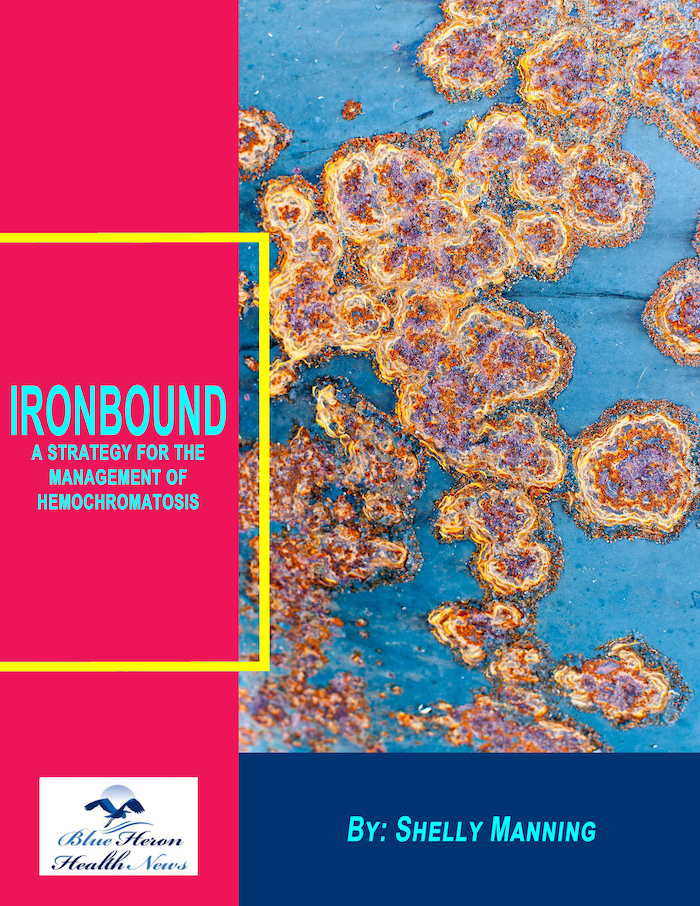
Ironbound™ A Strategy For The Management Of Hemochromatosis by Shelly Manning if you are suffering from the problems caused by the health condition of HCT due to excess amount of iron in your body then instead of using harmful chemical-based drugs and medications you are recommended to follow the program offered in Ironbound Shelly Manning, an eBook. In this eBook, she has discussed 5 superfoods and other methods to help you in reducing the level of iron in your body in a natural manner. Many people are benefited from this program after following it consistently.
How is liver function assessed in hemochromatosis patients?
In patients with hemochromatosis, liver function is assessed through a combination of clinical evaluation, laboratory tests, and imaging studies. Hemochromatosis is a genetic condition where excess iron is absorbed and stored in the body, which can lead to iron accumulation in various organs, including the liver. Over time, this can cause liver damage, cirrhosis, or even liver cancer. Here’s how liver function is typically assessed:
1. Blood Tests:
- Serum Ferritin:
Ferritin is a protein that stores iron in the body. Elevated ferritin levels are one of the key indicators of iron overload in hemochromatosis patients. High serum ferritin levels, along with elevated transferrin saturation, suggest iron accumulation, which can cause liver damage. - Transferrin Saturation:
This test measures the percentage of transferrin (a protein that carries iron) that is saturated with iron. In hemochromatosis, transferrin saturation is usually elevated. A level greater than 45% is often considered abnormal and suggests iron overload. - Liver Enzymes:
Liver enzymes, such as ALT (alanine aminotransferase), AST (aspartate aminotransferase), ALP (alkaline phosphatase), and GGT (gamma-glutamyl transferase), are measured to assess liver damage. Elevated levels of ALT and AST can indicate liver inflammation or injury, often associated with iron overload. - Albumin and Bilirubin:
Low albumin levels and elevated bilirubin levels can be signs of liver dysfunction or cirrhosis. These tests help assess the liver’s ability to produce proteins and process waste products. - Prothrombin Time (PT):
An abnormal PT, which measures how long it takes for blood to clot, can indicate liver dysfunction. In advanced liver disease (such as cirrhosis), the liver’s ability to produce clotting factors decreases, leading to prolonged PT.
2. Imaging Studies:
- Ultrasound:
Liver ultrasound can detect liver enlargement, fibrosis, or cirrhosis, which may result from chronic iron overload. It is a non-invasive and commonly used imaging technique. - MRI (Magnetic Resonance Imaging):
MRI can be used to assess iron deposits in the liver. An MRI with liver iron concentration (LIC) measurement is a more accurate way to quantify iron overload, especially in cases where serum ferritin and transferrin saturation are not fully reliable. - CT Scan:
A CT scan can also be used to assess liver size, texture, and any potential complications like cirrhosis or liver tumors, though it is less commonly used for iron quantification compared to MRI.
3. Liver Biopsy:
- In some cases, a liver biopsy may be recommended if there is significant concern about liver damage (such as fibrosis or cirrhosis) that requires further evaluation. This procedure involves taking a small tissue sample from the liver to examine for signs of damage or iron deposits. It is considered the gold standard for assessing liver damage but is invasive and typically reserved for cases where other tests are inconclusive or when liver damage is suspected.
4. Genetic Testing:
- HFE Gene Mutations:
Testing for mutations in the HFE gene (the most common cause of hereditary hemochromatosis) can confirm the diagnosis of hemochromatosis. Though genetic testing doesn’t directly assess liver function, it can help in identifying individuals at risk for iron overload and related liver issues.
5. Liver Function Score:
- In some cases, healthcare providers may use specific liver function scoring systems, such as the Child-Pugh score or MELD score, to assess the severity of liver dysfunction, especially if cirrhosis or liver failure is suspected.
Summary:
Liver function in hemochromatosis patients is assessed using a combination of blood tests (for iron levels, liver enzymes, and liver function), imaging studies (ultrasound, MRI), and sometimes liver biopsy. These assessments help determine the extent of iron overload, liver damage, and guide treatment decisions, such as phlebotomy (regular blood donation) or iron chelation therapy to manage the condition and prevent further liver damage.
Ironbound™ A Strategy For The Management Of Hemochromatosis by Shelly Manning if you are suffering from the problems caused by the health condition of HCT due to excess amount of iron in your body then instead of using harmful chemical-based drugs and medications you are recommended to follow the program offered in Ironbound Shelly Manning, an eBook. In this eBook, she has discussed 5 superfoods and other methods to help you in reducing the level of iron in your body in a natural manner. Many people are benefited from this program after following it consistently